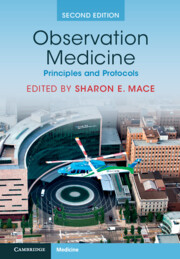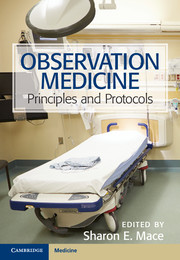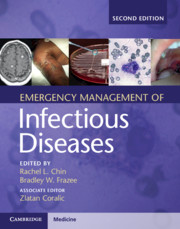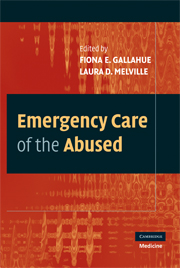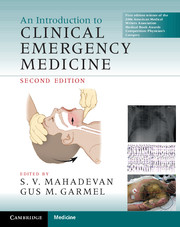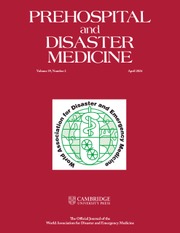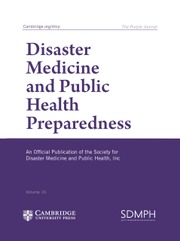Observation Medicine
Using comprehensive sample administrative and clinical protocols, this fully updated and practical second edition guide to observation medicine (OM) provides a detailed account of how to establish and run an observation unit (OU) and reviews medical/surgical/obstetrical-gynecologic/psychiatric/social conditions in which OM may be applicable. The book covers clinical topics including improving patient outcomes, avoiding readmissions, and using OM in a pandemic or disaster. Practical topics on design, staffing, and daily operations; fiscal and business aspects, such as coding, billing, and reimbursement; regulatory concerns such as aligning case management and utilization review with observation; nursing considerations are all present. The new edition features many new chapters and topics ranging from the geriatric OU, psychiatric observation, telemedicine in OM, to the cancer patient in the OU. Applicable to an international audience, it offers instructions for implementing observation in any setting or locale and in any type of hospital or other appropriate facility.
- Covering the many clinical conditions in which observation medicine (OM) can be applied, the book offers practical standardized order sets that can be used for any clinical scenario, saving valuable time for the clinician and decreasing the chance of omitting a useful diagnostic or therapeutic option
- Gives examples of how observation can be used to deal with emergency department (ED) patients with social issues, substance abuse issues and nonviolent psychiatric patients in a way that not only benefits the patient but also helps address the issues of ED crowding and boarding, and improves ED throughput
- Provides guidance on how to approach high risk and/or vulnerable patients such the geriatric or pediatric or complex patient with multiple comorbidities presenting to the emergency department who do not have a definitive diagnosis requiring admission
- Features discussion, and practical examples, of specialized and innovative uses of OM including geriatric OU, pediatric OU, psychiat
Product details
June 2025Hardback
9781316510643
923 pages
254 × 178 × 48 mm
2.039kg
Available
Table of Contents
- Foreword Nicholas Jouriles
- Preface
- Prologue
- Section I. Administration:
- 1. Key concepts of observation medicine: How to start (and maintain) an observation unit – What you need to know: Clinical issues Sharon E. Mace
- 2. Key concepts of observation medicine: How to start (and maintain) an observation unit: What you need to know: Administrative issues Sharon E. Mace and Michael A. Granovsky
- 3. Development of observation medicine over time Louis G. Graff
- 4. Principles of observation medicine Louis G. Graff
- 5. Design: Features common to successful observation units David J. Robinson
- 6. Staffing considerations David A. Meguerdichian and Christopher W. Baugh
- 7. Nursing Sharon E. Mace
- 8. Risk management Howard Blumstein and Bret A. Nicks
- 9. Metrics and performance improvement: Patient quality, safety, and experience Sharon E. Mace and Elaine Thallner
- Section II. Clinical Setting and Education:
- 10. The community hospital perspective in a suburban/rural setting Ryan Prudoff and Stephen F. Sayles III
- 11. Observation medicine and the urban community hospital Robert S. Bennett
- 12. The tertiary care hospital and academic setting Anwar Osborne
- 13. Rural observation medicine J. Lane Schnell
- 14. Observation medicine and the critical access hospital Jeffrey E. Goode and Justin Rodgers
- 15. Observation medicine and the hospitalist David G. Paje
- 16. Observation medicine and advanced practice providers Stephanie M. Figueroa and Dean T. Harrison
- 17. Observation medicine training and education – Residents Pawan Suri
- 18. Observation medicine training and education – medical students/fellows Bradley D.Lepore and Margarita E. Pena
- Section III. New Developments:
- 19. Simple, complex, and extended observation Pawan Suri
- 20. Complex and extended observation Ramupriya Vaithi and Bret A. Nicks
- 21. Hospital readmissions Sharon E. Mace and Elaine Thallner
- 22. Level of care determination: Medical necessity risk stratification Louis G. Graff
- 23. Acute medicine in the United Kingdom Louella Vaughan
- 24. Point-of-Care ultrasound in the observation unit Courtney M. Smalley and Matthew Kostura
- 25. Telehealth use in observation medicine George B. Hughes
- Section IV. Clinical: Subsection 4A clinical – Cardiac
- 26. Chest pain Stephen Boone and W. Frank Peacock
- 27. Acute heart failure Edgar Ordonez and W. Frank Peacock
- 28. Atrial fibrillation Catherine T. Puetz
- 29. Syncope T. Andrew Windsor, Zachary Rogers, and Amal Mattu
- 30. Cardiac stress testing
- Akilesh Honasoge, Kami M. Hu, and Amal Mattu Subsection 4B clinical – Respiratory
- 31. Asthma Eric Anderson
- 32. Acute exacerbation of chronic obstructive pulmonary disease and bronchitis Eric Anderson
- 33. Community acquired pneumonia Eric Anderson
- 34. Primary spontaneous pneumothorax Chai Chew Yian Subsection 4C clinical – Vascular
- 35. Venous thromboembolism Carol L. Clark and Hamzeh W. Omar
- 36. Acute pulmonary embolism David G. Paje
- 37. Anticoagulants David G. Paje
- Subsection 4D clinical – neurologic
- 38. Transient ischemic attack Jill A. Mohr and Jonathan Glauser
- 39. Headaches Sharon E. Mace and Lucy Franjic
- 40. Seizures Sharon E. Mace and Lucy Franjic
- 41. Dizziness and vertigo Saurin Bhatt
- 42. Central nervous system Shunts David A. Meguerdichian Subsection 4E clinical – Metabolic, endocrine
- 43. Hyperglycemia Pawan Suri and Taruna K. Aurora
- 44. Hypoglycemia Pawan Suri and Taruna K. Aurora
- 45. Electrolyte abnormalities Grace Lambert and Jonathan Glauser Subsection 4F Clinical – Hematologic
- 46. Sickle cell disease Matthew Lyon, Ann Marie Kuchinski, and Robert W. Gibson
- 47. Blood product transfusions Ryan Yavorsky and Jonathan Glauser Subsection 4G clinical – Oncologic
- 48. Oncology Adam Klotzb Subsection 4H clinical – Infections
- 49. Skin and soft tissue infections Robert S. Bennett Subsection 4I clinical – Gastrointestinal
- 50. Abdominal pain Louis G. Graff
- 51. Upper gast

